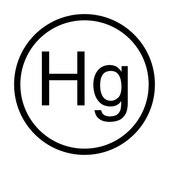Sign In to View Organizational & Contract Pricing.
Select a Size
About This Item
NACRES:
NA.41
UNSPSC Code:
12352203
Product Name
Anti-CD68 antibody produced in rabbit, affinity isolated antibody, buffered aqueous solution
biological source
rabbit
conjugate
unconjugated
antibody form
affinity isolated antibody
antibody product type
primary antibodies
clone
polyclonal
form
buffered aqueous solution
species reactivity
human
technique(s)
western blot: 1:500-1:3000
NCBI accession no.
UniProt accession no.
shipped in
wet ice
storage temp.
−20°C
Gene Information
human ... CD68(968)
Application
Suggested starting dilutions are as follows: WB: 1:500-1:3000. Not yet tested in other applications. Optimal working dilutions should be determined experimentally by the end user.
Biochem/physiol Actions
This gene encodes a 110-kD transmembrane glycoprotein that is highly expressed by human monocytes and tissue macrophages. It is a member of the lysosomal/endosomal-associated membrane glycoprotein (LAMP) family. The protein primarily localizes to lysosomes and endosomes with a smaller fraction circulating to the cell surface. It is a type I integral membrane protein with a heavily glycosylated extracellular domain and binds to tissue- and organ-specific lectins or selectins. The protein is also a member of the scavenger receptor family. Scavenger receptors typically function to clear cellular debris, promote phagocytosis, and mediate the recruitment and activation of macrophages. Alternative splicing results in multiple transcripts encoding different isoforms. [provided by RefSeq]
Disclaimer
For U.S. Customers: Contains mercury; Do not place in trash - dispose according to local, state, or federal laws.


Unless otherwise stated in our catalog or other company documentation accompanying the product(s), our products are intended for research use only and are not to be used for any other purpose, which includes but is not limited to, unauthorized commercial uses, in vitro diagnostic uses, ex vivo or in vivo therapeutic uses or any type of consumption or application to humans or animals.
Features and Benefits
Evaluate our antibodies with complete peace of mind. If the antibody does not perform in your application, we will issue a full credit or replacement antibody. Learn more.
Immunogen
Recombinant fragment corresponding to a region within amino acids 1 and 194 of CD68 according to NP_001242
Physical form
0.1M Tris, 0.1M Glycine, 10% Glycerol (pH7). 0.01% Thimerosal was added as a preservative.
Not finding the right product?
Try our Product Selector Tool.
Storage Class
12 - Non Combustible Liquids
wgk
WGK 1
flash_point_f
Not applicable
flash_point_c
Not applicable
Regulatory Information
新产品
This item has
Choose from one of the most recent versions:
Already Own This Product?
Find documentation for the products that you have recently purchased in the Document Library.
Shogo Kumagai et al.
Lung cancer (Amsterdam, Netherlands), 85(3), 457-464 (2014-07-22)
Increasing evidence suggests that an elevated peripheral monocyte count at presentation predicts a poor prognosis in various types of malignancy, including malignant lymphoma. In lung adenocarcinoma, tumor-associated macrophages (TAMs) were reported to be associated with a poor prognosis. However, it
Kalliopi Pitarokoili et al.
Journal of neuroimmunology, 274(1-2), 38-45 (2014-07-10)
Laquinimod is an immunomodulatory drug with neuroprotective potential. We used the animal model of experimental autoimmune neuritis (EAN) in the Lewis rat to study the effects of laquinimod treatment. After immunization with the neuritogenic peptide aa 53-78 of P2 myelin
William B Laskin et al.
The American journal of surgical pathology, 38(1), 1-12 (2013-10-15)
In this study, we examine the clinicopathologic features of 104 cases of myxoinflammatory fibroblastic sarcoma (MIFS), a low-grade, inflammatory fibromyxoid tumor with a predilection to distal extremity soft tissue, and attempt to identify factors predictive of aggressive behavior. The study
Yunmei Liao et al.
Laboratory investigation; a journal of technical methods and pathology, 94(7), 706-715 (2014-05-28)
Tumor-associated macrophages are a prominent component of lung cancer stroma and contribute to tumor progression. The protein V-set and Ig domain-containing 4 (VSIG4), a novel B7 family-related macrophage protein that has the capacity to inhibit T-cell activation, has a potential
Cristina Gonçalves et al.
World journal of gastroenterology, 20(42), 15780-15786 (2014-11-18)
To characterize clinical, laboratorial, and histological profile of pediatric autoimmune gastritis in the setting of unexplained iron deficiency anemia investigation. A descriptive, observational study including pediatric patients with a diagnosis of autoimmune gastritis (positive parietal cell antibody and gastric corpus
Our team of scientists has experience in all areas of research including Life Science, Material Science, Chemical Synthesis, Chromatography, Analytical and many others.
Contact Technical Service